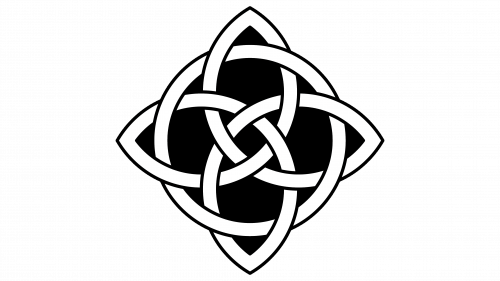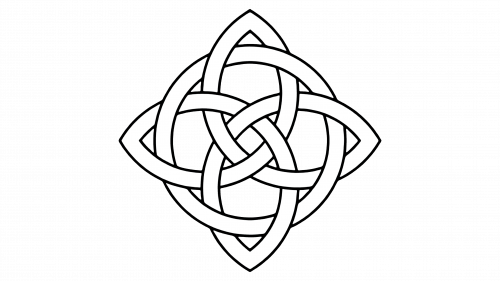 Quaternary Celtic Knot Symbol PNG
Quaternary Celtic Knot Symbol PNG
Celtic designs are like a special language made long ago by the Celtic people in Europe. They used cool patterns and symbols to show what they thought was important, like nature, the spirit world, and the stars. Some of their designs, like the Celtic Cross and the Celtic Knots, are pretty famous, and many people like them. But many more symbols are just as interesting and tell us more about what the Celts believed.
One special symbol is the Quaternary Knot. The quaternary Celtic knot or four-cornered Celtic interlace is one of the variations of traditional Celtic ornamental motifs. It is full of meaning and has four sides. It reminds us of the four main directions (north, south, east, west), the four elements (earth, air, fire, water), and how the seasons change. The knot ties all these ideas together to show how everything is connected and balanced.
This knot pops up in lots of places in Celtic culture:
- You can find it in old books, where it decorates the pages and makes them look pretty while sharing ideas about nature and learning.
- It’s also in ancient stone carvings and old ruins, reminding us of what the Celts believed, especially their love for nature’s cycles.
- It was applied to amulets for harmony with the surrounding world.
- This ancient symbol can often be seen on Celtic crosses and tombstones, where it represents the soul’s eternal journey through the cycles of life and death.
- Even today, people use this design in jewelry, tattoos, and more, showing that the old Celtic ways still mean something to us.
The Celtic quaternary knot, or four-cornered Celtic interlace, symbolizes a multitude of interesting ideas and meanings:
- Form and Design: This knot consists of four parts connected together, forming a pattern. This design can be simple or very detailed, depending on its execution.
- Power of Four: The knot demonstrates the importance of the number four in Celtic culture. It can represent the four directions (north, south, east, west), four elements (earth, water, fire, air), four seasons, or four phases of the moon. This makes the knot a symbol of wholeness and balance.
- Forever and Always: Like other Celtic knots, the quaternary knot often appears to have no beginning or end, signifying eternity and the infinite cycle of life and nature.
- Protection: These knots can be viewed as powerful protectors. It is believed that their intricate patterns ward off bad moods and negative vibrations.
- Unity: The knot may symbolize the unity of different forces or aspects of life. It emphasizes the importance of coming together and living in harmony.
- Connection with Nature: By associating with the elements and the seasons, the quaternary knot underscores the Celts’ connection with nature and its cycles, showing that nature is an essential part of life.
- Art and Decor: Quaternary knots can be found in Celtic art, jewelry, tattoos, and everyday items, where they add a layer of meaning and enhance beauty.
- Spiritual Significance: For many, this knot also has a spiritual aspect. It’s about seeking inner peace, balancing the soul and body, and integrating the spiritual with the everyday.
The Celtic quaternary knot is a complex symbol that brings together various aspects of Celtic culture and beliefs, reflecting universal themes.
Quaternary Celtic Knot Tattoo
Getting a quaternary Celtic knot tattoo is like saying you respect how everything works together. People who wear the tattoo like to think about the grand journey of life and how we all are part of something greater. The quaternary Celtic knot reminds us of the four fundamental parts of nature and how they guide us. It’s all about balance and moving forward, as the Celts long believed.
In modern tattoos, the quaternary Celtic knot symbolizes:
- Harmony and unity of man with nature and the cosmos.
- The four elements – earth, water, fire, and air.
- The cyclicality of the seasons and constant renewal.
- Navigation through life’s path and spatial orientation.
- Eternity and the infinite flow of life.
- Luck and protection from invisible forces.
This symbol expresses a commitment to Celtic culture and respect for the heritage of ancestors, often adorned with additional ethnic motifs to create unique compositions.





